We caught Bosse on Skype while he was en route from Honk Kong to Sydney, to get his thoughts on the future urban jungle, a place he calls Cloud City.
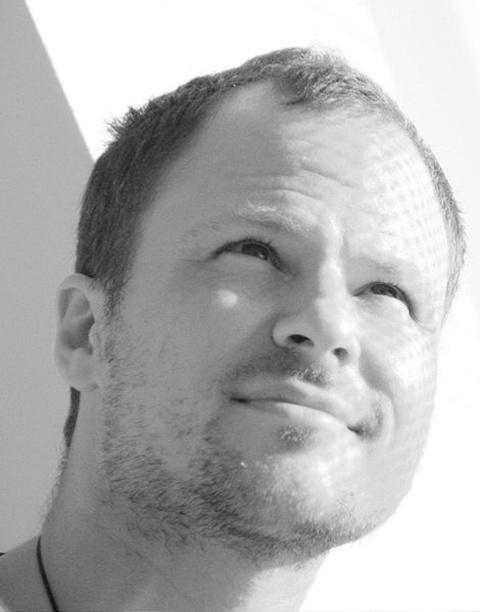
New Dogma
Cloud City is a metaphor in sculpture for the kind of place we are able to create where our architectural environment catches up to who we are today. I’m always surprised that architecture is still built brick by brick like it was done centuries ago, when we live in a society of nanotechnology, biotechnology, people living with, communicating and relying on electrical devices all the time. Architecture is the only creative entity that remains dogmatically old-fashioned.
The future urban ecosystem of my vision is a soaring, stretched membrane‐cloud anchored to the city on the gallery floor by high-rise towers that have been re‐skinned and revitalized.
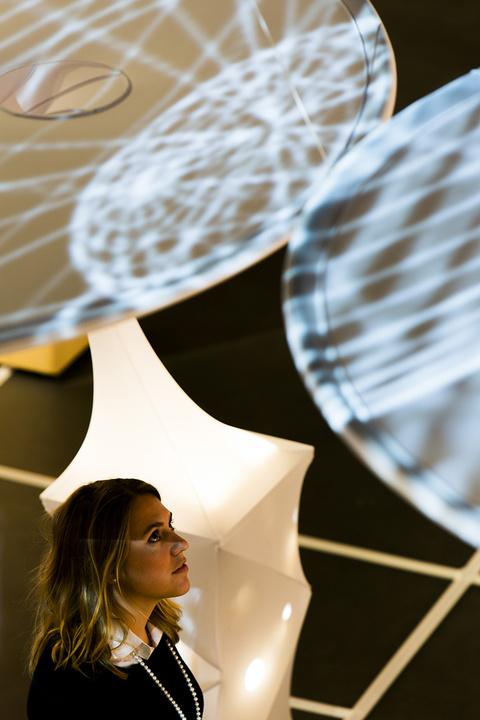
Updating Architecture
Many of the world’s great cities are largely already built—of old fabric. New York City, for example, was mostly built in the 1920s, way before computers or mobile phones were invented. Technology has accelerated so fast that buildings can’t keep up. So my question is: How can architecture be updated? We update our technological devices all the time, we update our wardrobes, we adapt and react to our environment constantly. Can architecture do the same?
Our installation asks: "Can cities of the future be organisms that respond and adapt to their environment?"
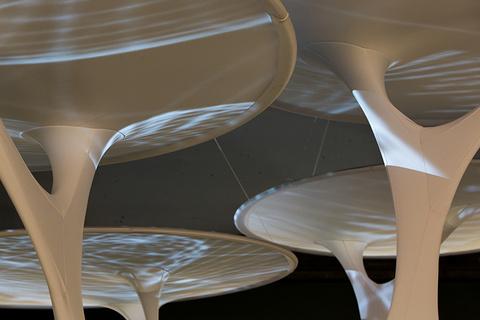
Re-Skinning
The buildings of the future do not need to be built from scratch. We can preserve history, save the effort of knocking old buildings down and trying to reinvent new ones by just adding layers of intelligence to them. With the skins we are developing, we can improve buildings’ performances by giving them the power to harvest energy, collect rainwater, create a microenvironment or store data. By attaching steel beams to the outer area, then stretching a cocoon-like membrane equipped with intelligence across a building, and from building to building, our re-skinning model immediately brings its re-skinned edifices into the 21st Century. By revamping inefficient buildings, past infrastructure is transformed into a super‐abled environment.
We Are One
The future is not about what buildings look like alone, it’s not about real estate. It’s about how buildings perform, interact and connect with each other. Think of a coral reef, where thousands of species thrive in coexistence with each other and the elements; air, water and sun. The reef is like the city of the future.
The networked city of Cloud City vision is a connected interdependent organism where buildings are not singular structural entities (designed, serviced and accessed as isolated units), but part of large networked system. Interaction, network and resource sharing reflects our contemporary ideals in the buildings we live and work in.
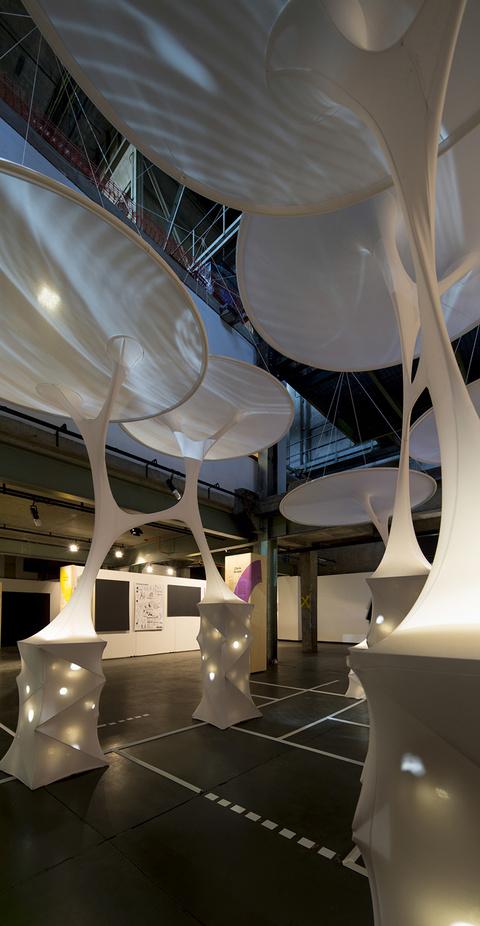
A Living, Breathing Genius of a City
To literally top this off, a distributed cloud hovers above the re-skinned buildings and via underground, satellite and floating devices, communicates, shares smart building technology, connectivity, data transfer and joint infrastructure among the city and its members, allowing transport, housing and urban infrastructure to adapt in response to the people using it. This holistic environment replaces outdated passive building facades with high‐performance smart translucent cocoons that create their own microclimate, generate energy, collect rainwater, protect the city from wind, and improve the distribution of natural daylight and air. It’s a great solution for the making of sustainable cities that meet us where we are.
LAVA has been developing these sophisticated skin membranes using integrative technology and cutting edge materials and testing them to suit real city and population needs.
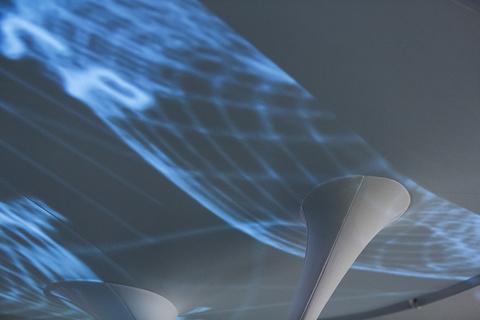
Spider Web Inspirations
Ideas come to me when I go out for a walk. I set a task and then I let it go and it comes back to me intuitively. I think I’m a synthesizer more than an inventor. The great thing about the Internet is that we have access to everything, but it’s so vast that you can get lost in it and there is always a danger as a creative person in looking too much at what others are doing. I would rather look at a spider web and observe how it sits in a tree. The spider web’s membrane, how it wraps around a branch, this kind of natural organization inspires me more than anything.
If people feel nice when they are inside the spaces I create, it’s because ambiance, and intuition about where the light should fall or how the breeze should move, are human qualities that are taken from nature. Although I’ve been trying, there has not been a way to equip computers with these attributes…yet.
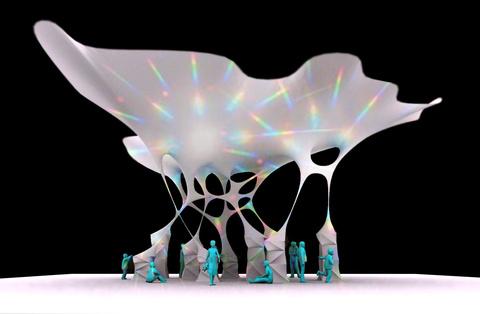
LAVA’s Tower Skin, a speculative transformation of the University of Technology Sydney (UTS) tower in Sydney, Australia, won the 2013 ZEROprize Re-Skinning Award in Rio de Janeiro.
Cloud City will be traveling with CUSP throughout Australia.
